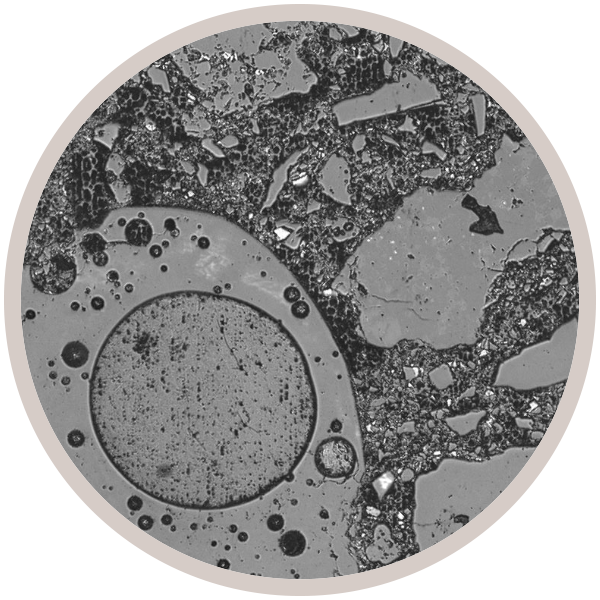
Fact sheet
Apollo astronauts collected not only rocks and breccias, but also carefully cored soil (or regolith). While the Moon rocks have been more intensively studied, there is a huge amount of information to be learned about the active processes on the Moon's surface from these samples. We're presenting just one example and only in reflected light, to illustrate the amount of metallic and sulphide particles in the regolith.
The NASA lunar sample compendium describes this core sample from the Apollo 16 location: Drive tube 64001/64002 collected on Stone Mountain at Station 4, within one crater diameter of a 15 metre subdued doublet crater. The deep sections of the core may contain the best samples of typical Descartes material. The sample area has a 10-15 degree slope to the northwest. There are a few scattered cobbles 5-10 cm. Scattered craters 0.5 to several meters in diameter are common in the general area, there is a 0.5 metre crater just southwest of the drive tube.
Thanks to Doug Rickman at Marshall Space Flight Center for sending us this image.
The Apollo 16 landing site was in the hilly region around Descartes crater in the lunar highlands. The landing spot was chosen to allow the astronauts to gather geologically older lunar material (Descartes Formation and the Cayley Formation) than the samples obtained in the first four landings, which were in or near lunar maria.
The mission lasted 11.1 days, with a stay on the lunar surface of 71 hours. The crew were on the lunar surface for 20.2 hours during which they traversed approximately 27 kilometers and collected approximately 96 kilograms of samples.
Apollo 16 was launched on 16 April 1972.







